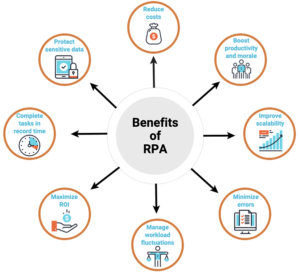This article does a great job of breaking down and explaining how the process of supply chain management could be transformed using RPA (robotic process automation). We also provide various benefits from implementing this technology, providing detailed information on what to expect.
What is Supply Chain Management?
Supply chain management is organizing and controlling the flow of materials, components, and finished products from their point of origin to the end-user. Supply chain management aims to ensure a timely and efficient supply of products to customers while maintaining a high level of quality.
How RPA Can Help Transform Supply Chain Management
With the rise of RPA in the market, there is no question that supply chain management is going to see some major changes. Here are just a few ways that RPA can help transform your supply chain into a more efficient and effective operation:

1. Automating repetitive tasks can save both time and money. By automating simple, low-skill tasks, you can free up your team to focus on more complex tasks or new projects. This also helps to speed up your process and improve accuracy and quality.
2. RPA can help streamline communication and collaboration between different departments and divisions in your company. You can better track information and keep everyone updated on critical developments by automating communication processes.
3. Automated data collection can help you monitor your performance and make better decisions about future course corrections or expansions. By automatically collecting data from various sources (such as sales records, customer complaints, etc.), you can get an accurate picture of your business’s overall performance.
4. Automated decision-making can allow you to make faster and more informed decisions about which products to produce or which suppliers to contract with.

How To Implement RPA in the Supply Chain
RPA is a great way to streamline the supply chain process. Automating tasks and processes can increase efficiency and improve customer satisfaction. Here are four ways to implement RPA in your supply chain:
- Automate Order Fulfillment With RPA, you can automate order fulfillment tasks such as entering orders into a system, processing payments, and shipping products. This can improve efficiency and accuracy, reduce customer complaints, and improve your brand reputation.
- Automate Customer Service With RPA, you can automate customer service tasks such as greeting customers, resolving issues, and billing customers. This can reduce your workload and help you provide better customer service.
- Automate Logistical Operations With RPA, you can automate logistical operations tasks such as stocking shelves, tracking inventory, and shipping products. This can reduce costs and improve the speed of delivery.
- Automate Cross-Functional Tasks With RPA, you can automate cross-functional tasks such as data entry, research, and analysis. This can help you save time and money by eliminating redundant work.
Conclusion
With the rise of RPA, supply chain management has become a more important function for businesses of all sizes. In this article, we have discussed some of the benefits that can be realized by implementing RPA into your supply chain management process.




























